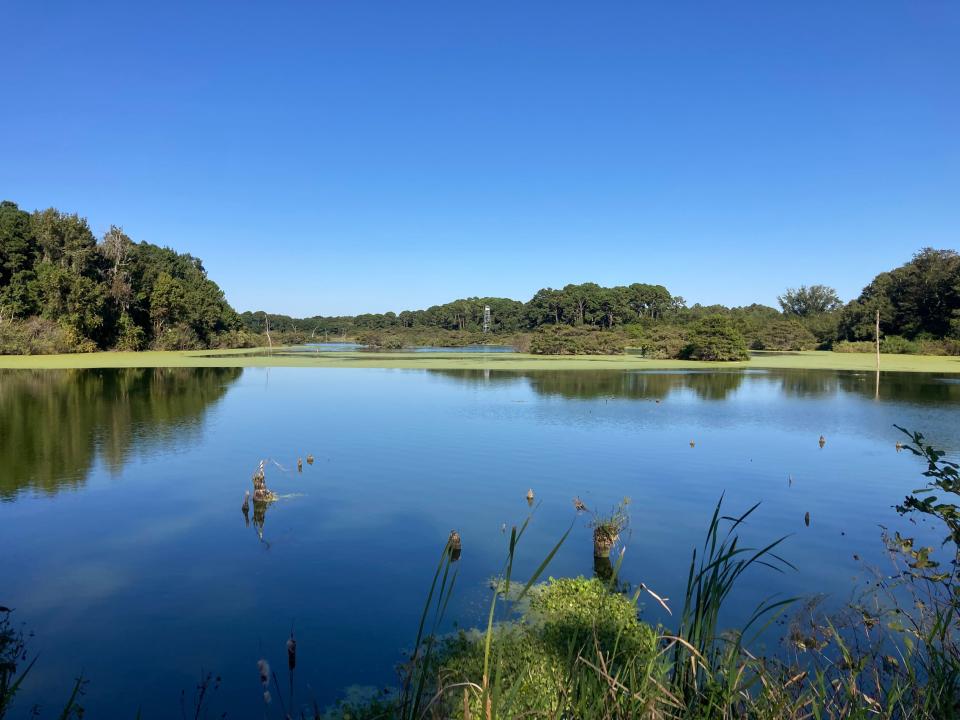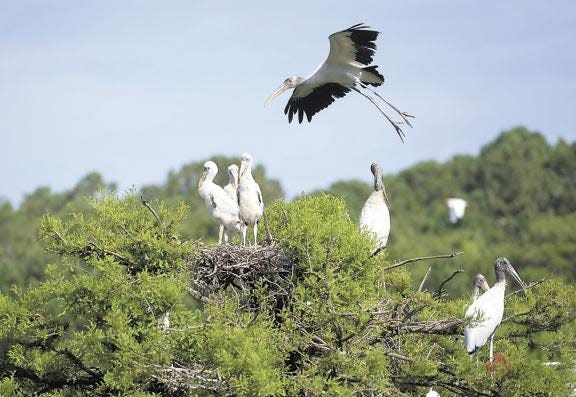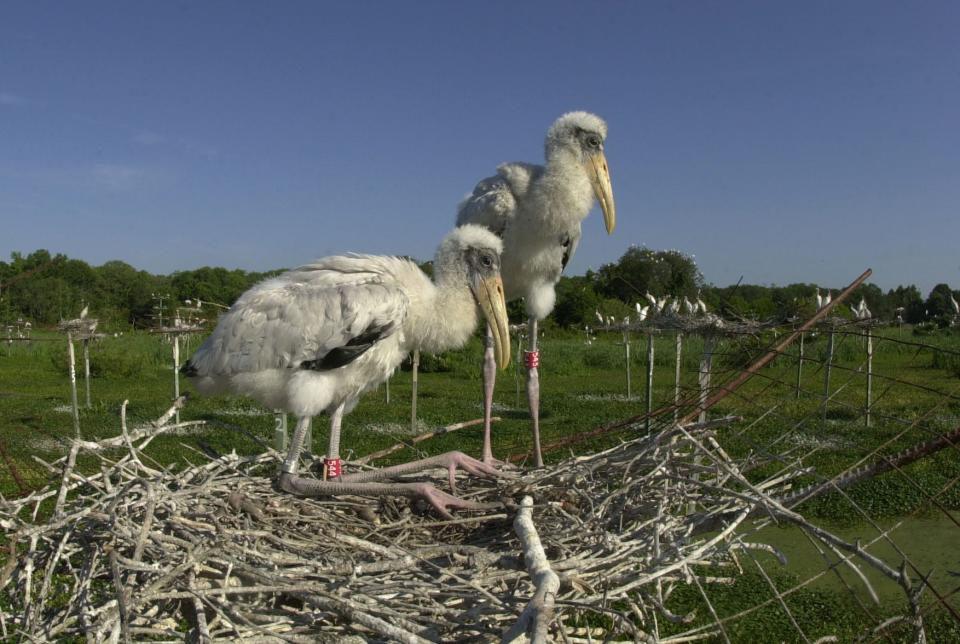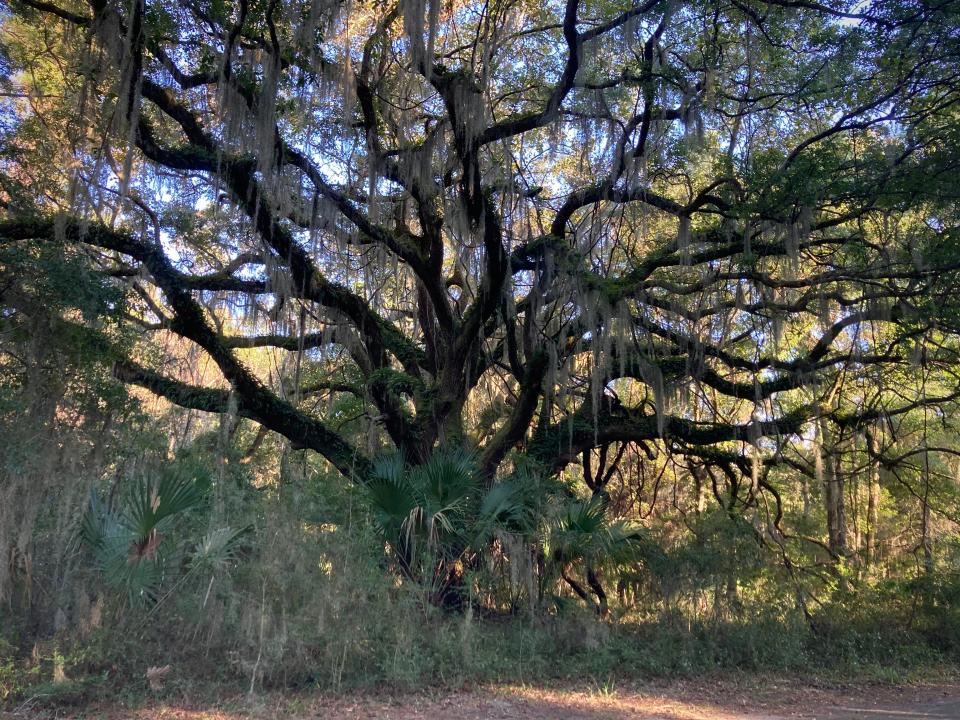One tank trip: Reflect on the history while taking in Harris Neck National Wildlife Refuge
Less than an hour south of Savannah off I-95, Harris Neck National Wildlife Refuge stretches along nearly 3,000 acres of Coastal Georgia. Though the history of this land is contentious, it is beautiful. Sweetly low slung with old growth live oaks, palm trees, marshes and fresh water ponds, this stoic biological gem is relatively easy to navigate.
Today, the refuge offers some of the region’s best opportunities for solitude, hiking, biking and bird watching.
Originally home to Gaule indigenous people, they thrived here, fishing and hunting the coast for at least 500 years before the arrival of the French in 1562. A couple hundred years later, English and Scottish colonists quickly laid claim, cultivating it into a series of rice and cotton plantations that would last until the Civil War.
One tank trip:By ferry or horse, Daufuskie and Hilton Head Island are ample lands to explore
Other columns:Enjoy nature and history together with a camping trip to Jekyll Island
More:Put 'sibling rivalries' to bed — there's a variety of fun to have in Charleston
In 1865, freed Gullah Geechee people began their tenure with small sustainable farms and shellfish fisheries. As many as 75 families flourished in the area until 1942 when the federal government condemned the land, forcing out residents to make way for a military airbase.
Twenty years later the feds intervened once more to declare the acreage a national wildlife refuge, prohibiting displaced Gullah Geechee from returning to their former farms and homes.

In 2006, the Harris Neck Land Trust was formed, advocating for survivors of the original freed families in hopes of finding an equitable reparations solution. Though the issue has received significant local, regional and national press, no substantial progress has been made toward resolution.
The history of this beautiful, abundant land now called Harris Neck National Wildlife Refuge isn’t very sweet or easy.
One tank trip:St. Phillips Island is a natural refuge less than a tank of gas away
These facts raced through my mind as I unloaded the bicycle from the back of my car one Saturday in mid October. I was the only one parked in the lot at the entrance and felt a little like a trespasser on land meant for a range of stewards other than me.
But pedaling into the four-mile perimeter loop, these thoughts gave way to awe, appreciation and gratitude. I embraced being the only person present in the refuge.

My first stop was Woody Pond. With binoculars slung around my neck, I ventured to the observation area where it was incredibly quiet with few birds. A lone juvenile bald eagle perched high atop a snag preening itself paid me no mind.
Back on the bike, I pedaled to the junction of Wildlife Drive and Airfield Perimeter Loop. There, I encountered the first and only people I’d see that day. An older couple, a lot like my grandparents, grey-haired and outfitted with binoculars. The husband walked with a cane.
One tank trip:Augusta Canal provides amazing views, camping and kayaking. Just not in summer.
As they approached the woman said in a near whisper: “Up this trail a quarter mile are about 75 roseate spoonbills, some wood storks and great egrets. Go slow and quiet and you’ll see them on the left in the first pond.”
And that’s what I did.

A dyke about 100 feet in length separated two human-made ponds. On my left, a bright pink assortment of spoonbills sifted through mud and silt. Egrets, a healthy flock of wood storks, black vultures, a handful of crows and the fussing of Carolina wrens rounded out the bird before me. Plus, three sizable alligators lurked in the shallows as I stood silent and viewed them through my binoculars, taking in the animal drama.
The egrets and spoonbills seemed to have a cordial co-working relationship that the wood storks respectfully did not interrupt. Whenever a black vulture would land in their midst, however, egret, spoonbill and stork alike would dramatically protest until the seemingly unsavory intruder settled on the margins of the congregation.
One tank trip:Share an apple with a donkey on the prehistoric grounds of Stallings Island
Two alligators took turns patrolling mere feet in front of a cluster of egrets wading near a sandbar. The birds captivated in ways that were so very similar to how humans interact with one another.
Back on the bike, hunger rattled, and I pedaled to one more stop before heading out to grab dinner.

Gould’s Cemetery, located just within the refuge’s southern boundary, is the resting place for many freed Gullah Geechee people who prospered and loved this land prior to 1942. Here, near the edge of Barbour River, it is quiet, well maintained. The dates on the headstones offer a meditative glimpse into the histories of the people interred here.
Several were born before the Civil War then laid to rest after the turn of the 20th century. To me, it is humbling to think about the immense social changes many here experienced during their lifetimes and how those changes no doubt imbued everyone in this community with a deep, genuine love and reverence for this land.
One tank trip:Hostel in the Forest is a holistic getaway just minutes from Brunswick
For dinner, I opted for The Old School Diner, a funky-fun eatery where local icon Chef Jerome Brown serves his signature fried shrimp and seafood dishes five days a week. His place is just two miles from the refuge.

Or you can head over to The Fish Dock Bar and Grill 20 minutes away and grab an equally great, fresh-caught meal before hopping back on I-95 and heading home to Savannah.
This article originally appeared on Savannah Morning News: Georgia travel: Experience Harris Neck National Wildlife Refuge

